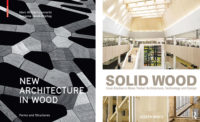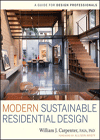Pierre Koenig: A View from the Archive, by Neil Jackson. Getty Publications, 304 pages, $55.
Just the mention of Midcentury Modern architecture easily conjures up Julius Shulman’s image of Pierre Koenig’s Case Study House 22, cantilevering over the Los Angeles landscape. But Koenig was so much more than just the creator of a pair of Case Study houses, as Neil Jackson’s new book reveals. Anyone who has drawn a steel detail should feel a debt to Pierre Koenig (1925–2004), whose refinement of technique and materials spanned a whole career. Thankfully, Jackson has included most of these details in a rich set of plates that fills the final third of the book.
As important as these illustrations is his deeply researched investigation of individual projects executed over the course of Koenig’s professional life. These include episodes of Koenig’s working through wood post-and-beam construction with Rafael Soriano on his way to designing his own house in steel. Bolstered by the expansive archives of the Getty Research Institute, Jackson traces project development and change orders as well as sketches, plan sets, and photographs showing works in progress and completed buildings.
The author emphasizes the peaks of Koenig’s career—the inclusion of his work in John Entenza’s Arts & Architecture program in the late 1950s and, in 1989, a full-scale reconstruction of Case Study House 22 for the Blueprints for Modern Living exhibition at the Museum of Contemporary Art in Los Angeles. Yet Jackson doesn’t neglect the slow period in the early 1980s when few new clients arrived, and the bulk of Koenig’s work was devoted to updating past projects. When Koenig was at his height, his visions for custom residences, achieved economically through industrialization, helped to define the Southern California modernist style.
The Sea Ranch: Architecture, Environment, and Idealism, edited by Joseph Becker and Jennifer Dunlop Fletcher. Prestel, 176 pages, $60.
In November 1965, Architectural Record featured the then new Sea Ranch among other so-called “Second-Home Communities” in a 15-page spread touting its “exceptional planning.” (You can find that issue in the online archive.) Now the Northern California residential retreat is the subject of a current SFMoMA exhibition, open until April 28, and is accompanied by this catalogue.
What becomes immediately apparent, in observing how embedded the Sea Ranch buildings are in its landscape, is just how crucial that design ethos was for the talented team assembled by developer Alfred Boeke. Landscape architect Lawrence Halprin seized upon the experiential and environmental value of the 5,000-acre plot to help preserve it as a communal benefit. Working with him were Berkeley architects Charles Moore, Donlyn Lyndon, William Turnbull, and Richard Whitaker of MLTW, as well as San Francisco architect Joseph Esherick. Finally, Barbara Stauffacher Solomon developed the Sea Ranch’s strong and playful visual identity, from logo and signage to supergraphics. The group designed weathering-wood-clad condominiums and cabins, protected by earth berms and hedgerows, with rooftops angled to shelter the structures from the prevailing winds. The modified barn-like forms appeared clustered together for warmth like the herds of sheep that once occupied the land.
The book’s editors, Jennifer Dunlop Fletcher and Joseph Becker, provide written recollections of the Sea Ranch experience from residents and creators. Solomon is quoted: “That was the whole idea, that good design was good for you, good to look at.” More academic essays offer critical responses to the development, intermingled with contemporaneous and commissioned photography so vivid that the salt-laden fog becomes almost palpable. The whole production sheds light on East Coast misgivings about this free-spirited West Coast vernacular modernism and the designers’ prescient notion that the craggy landscape was one well worth protecting.







